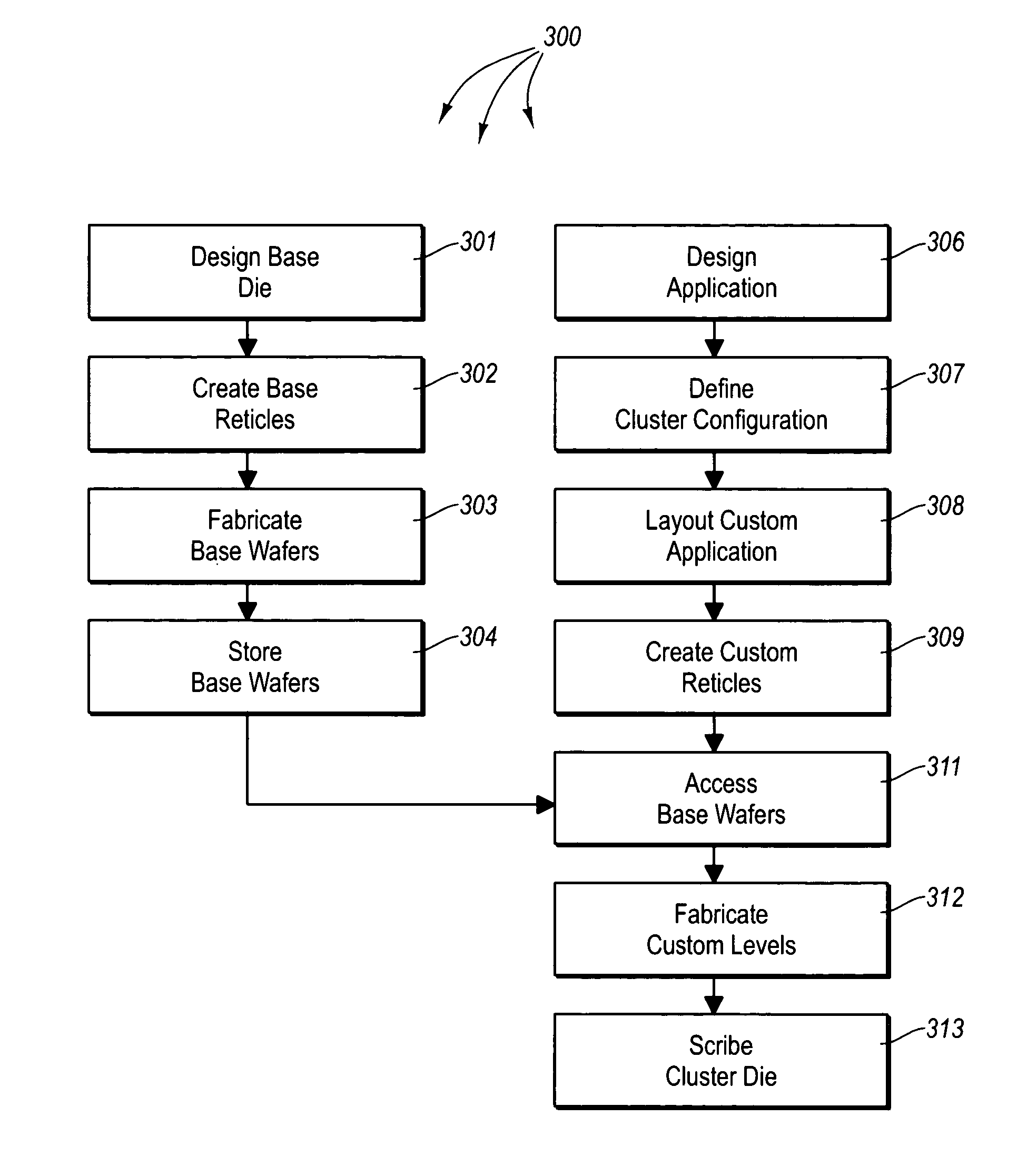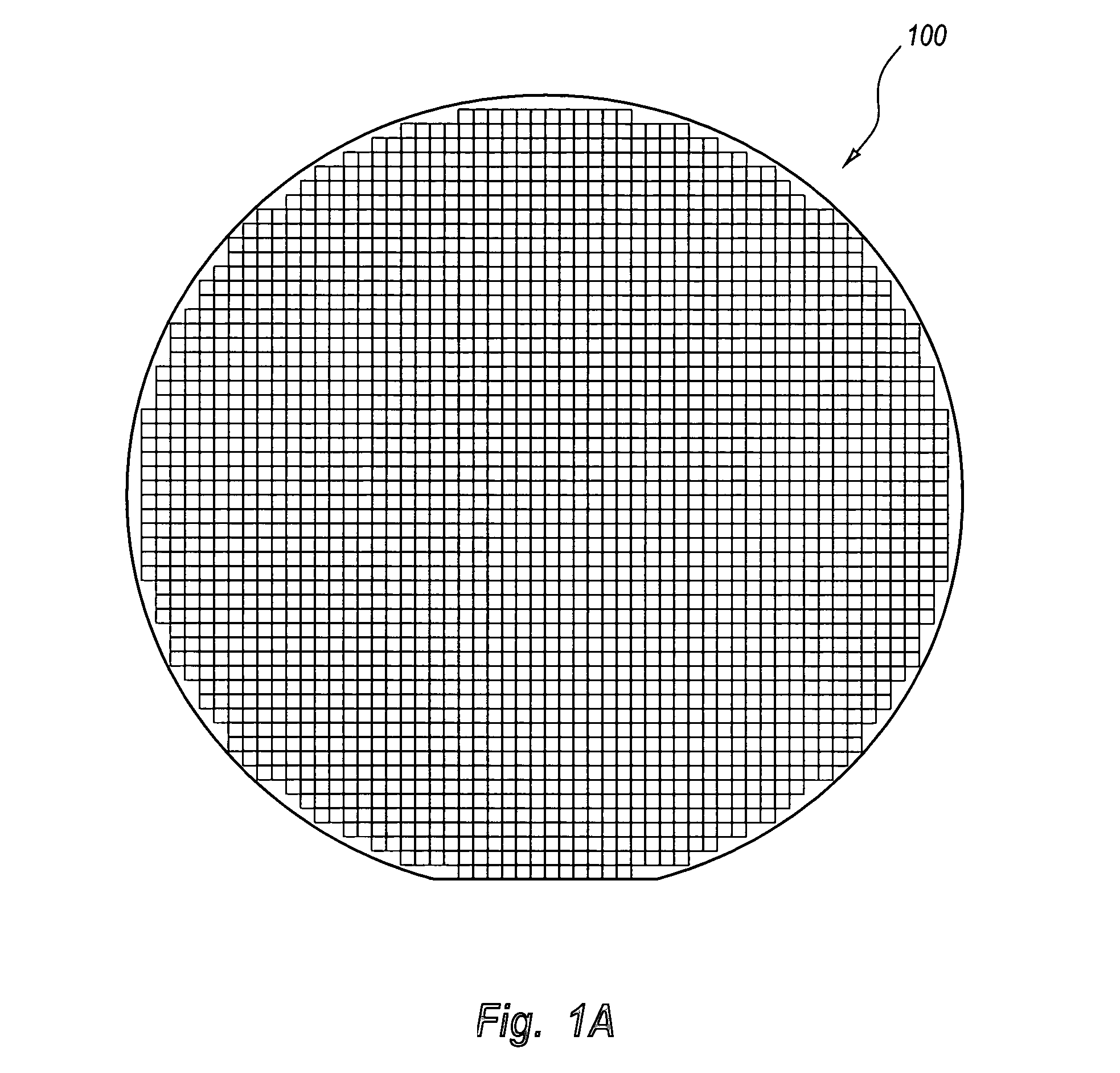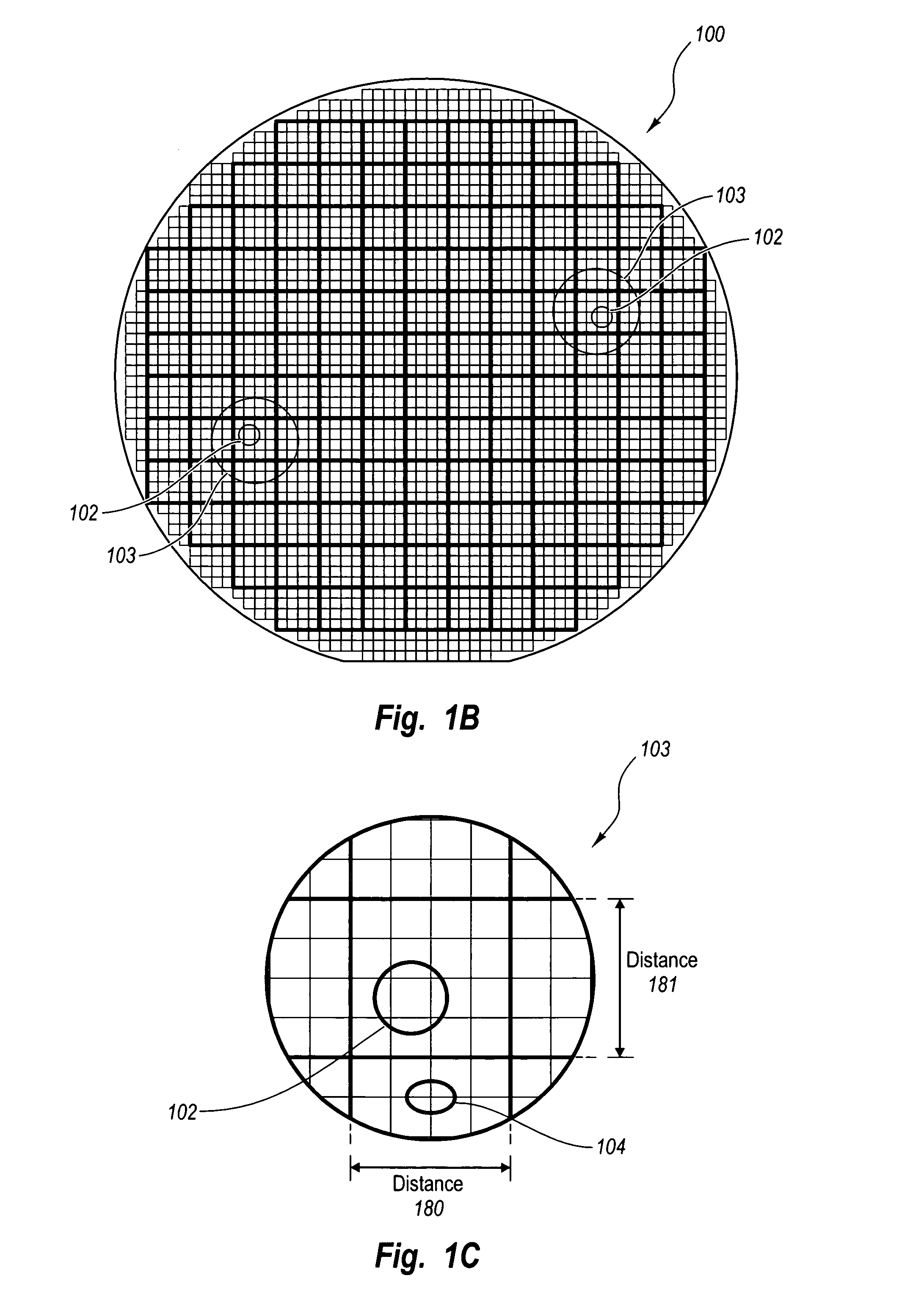Structured ASIC device with configurable die size and selectable embedded functions
a technology of asic devices and die sizes, applied in the direction of instruments, semiconductor/solid-state device details, pulse techniques, etc., can solve the problems of increasing the development cost limiting the use of cell-based and hand-crafted custom ic's to very high-volume cost-sensitive applications, and reducing the number of base wafer designs. , the effect of reducing the cost of tooling
- Summary
- Abstract
- Description
- Claims
- Application Information
AI Technical Summary
Benefits of technology
Problems solved by technology
Method used
Image
Examples
Embodiment Construction
[0040]The principles of the present invention are directed towards reducing the number of base wafer designs and reducing base tooling expenses associated with structured and platform ASICs while optimizing die size for individual applications.
[0041]Generally, silicon wafers used in the fabrication of integrated circuits can be partially fabricated up through a desired processing level (e.g., to implement partial IC functionality). The wafer at this stage is commonly referred to as a “base wafer”. To accomplish this, one or more levels are created through a conventional photolithographic process involving a series of printing and processing steps. For each level, a pattern is printed on a reticle with appropriate alignment marks for aligning of the reticle to the previous levels on the base wafer. The pattern of the reticle is applied to the surface of the base wafer to print a pattern on a portion of the wafer. Then, the reticle is stepped to other locations on the wafer using the ...
PUM
 Login to View More
Login to View More Abstract
Description
Claims
Application Information
 Login to View More
Login to View More - R&D
- Intellectual Property
- Life Sciences
- Materials
- Tech Scout
- Unparalleled Data Quality
- Higher Quality Content
- 60% Fewer Hallucinations
Browse by: Latest US Patents, China's latest patents, Technical Efficacy Thesaurus, Application Domain, Technology Topic, Popular Technical Reports.
© 2025 PatSnap. All rights reserved.Legal|Privacy policy|Modern Slavery Act Transparency Statement|Sitemap|About US| Contact US: help@patsnap.com



